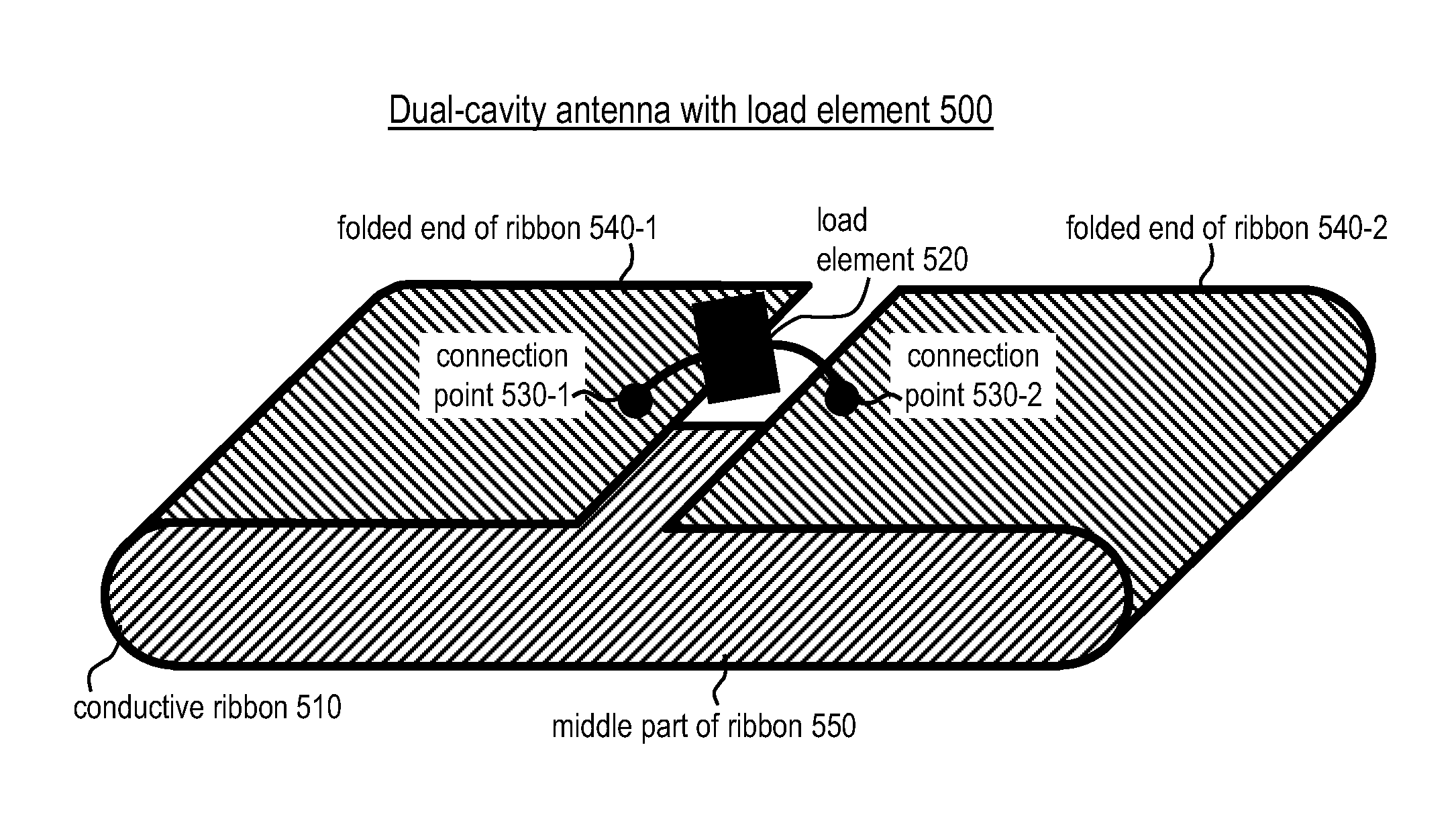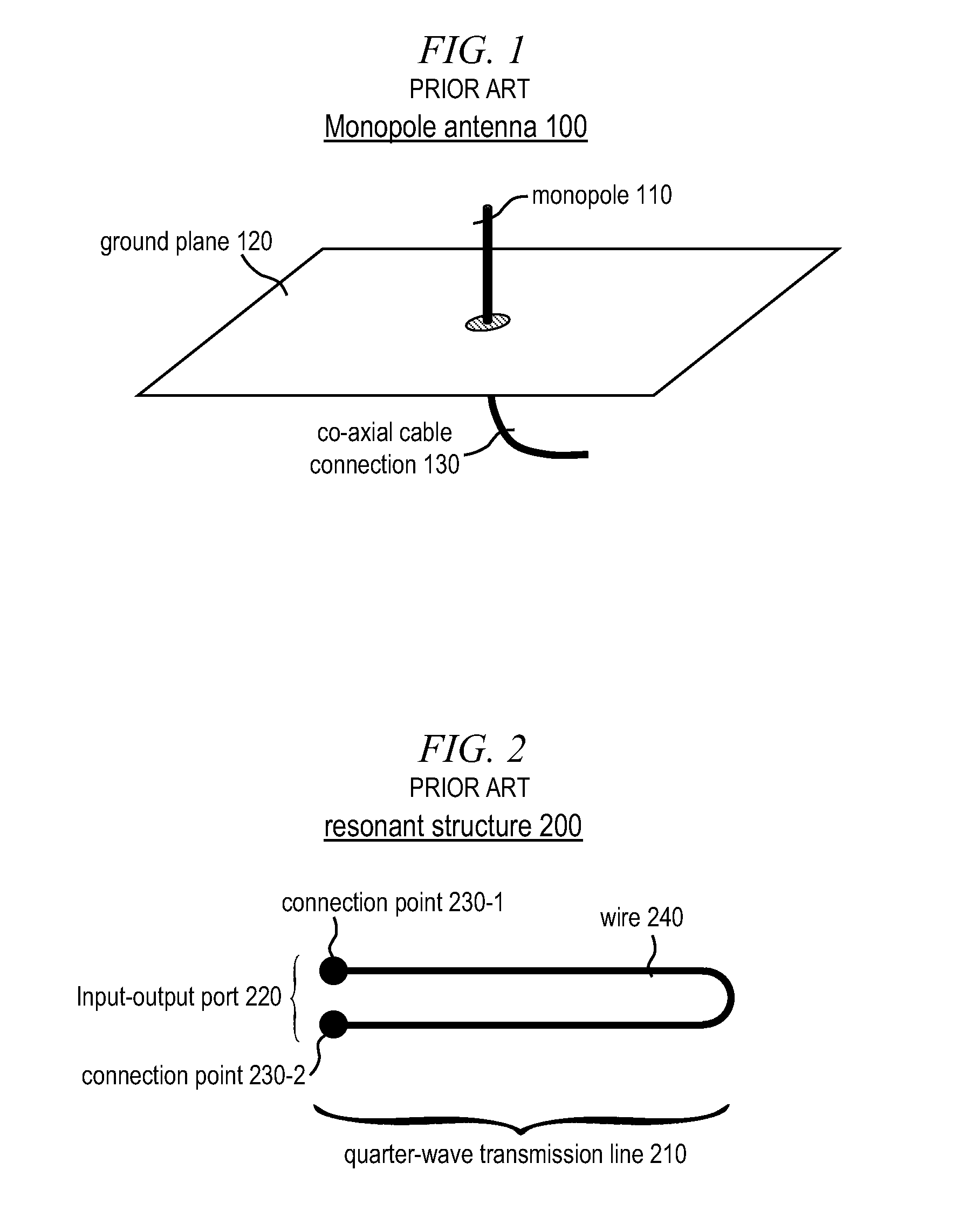Multiple-Cavity Antenna
- Summary
- Abstract
- Description
- Claims
- Application Information
AI Technical Summary
Benefits of technology
Problems solved by technology
Method used
Image
Examples
Embodiment Construction
[0045]FIG. 5 depicts dual-cavity-antenna-with-load-element 500 in accordance with a first illustrative embodiment of the present invention. Dual-cavity-antenna-with-load-element 500 comprises: conductive ribbon 510, load element 520, and connection points 530-1 and 530-2 interrelated as shown. In particular, the two ends, 540-1 and 540-2, of conductive ribbon 510, are folded over the middle part 550 of conductive ribbon 510 and they are on the same side of the middle part 550 of conductive ribbon 510. The two folded ends 540-1 and 540-2 do not touch one another. Connection points 530-1 and 530-2 are on the two folded ends, 540-1 and 540-2, of conductive ribbon 510.
[0046]Each of the two folded ends 540-1 and 540-2 forms a resonant cavity together with the middle part 550 of conductive ribbon 510. The two cavities are electrically connected together via the shared middle part 550 of conductive ribbon 510. Compared to prior-art folded-dipole antenna 300, dual-cavity antenna with load e...
PUM
 Login to View More
Login to View More Abstract
Description
Claims
Application Information
 Login to View More
Login to View More - R&D
- Intellectual Property
- Life Sciences
- Materials
- Tech Scout
- Unparalleled Data Quality
- Higher Quality Content
- 60% Fewer Hallucinations
Browse by: Latest US Patents, China's latest patents, Technical Efficacy Thesaurus, Application Domain, Technology Topic, Popular Technical Reports.
© 2025 PatSnap. All rights reserved.Legal|Privacy policy|Modern Slavery Act Transparency Statement|Sitemap|About US| Contact US: help@patsnap.com



